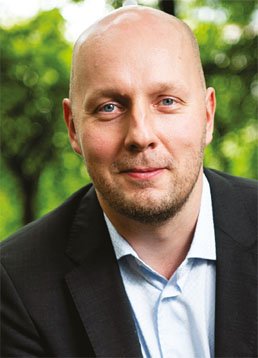They say that we are living a new normal and that there is no going back to the old normal. What is the old normal in university teaching? Meeting students in lectures, seminars, supervision meetings. All this has become virtual, as stipulated by the restrictions of the coronavirus epidemic. University faculty members have shown high-level pedagogic competence, as they have managed to transform so much of their teaching to a different format, to completely different environments, in minimal time. This has, though, had its human price: working hours have not been counted.
However, even this forced digital leap does not seem to be enough: Jari Gustafsson, Permanent Secretary at the Ministry of Economic Affairs and Employment of Finland, stated in a recent interview that youth unemployment could be alleviated by increasing the admissions quota of higher education institutions and that this could happen through “community labour”.
At higher education institutions, community labour directly means community labour by faculty members – every student meets, at some point, a university teacher, a lecturer, a university lecturer, a clinical teacher, an amanuensis, a student services secretary, and so forth. Every supervision meeting, completed course and email means more concrete labour.
During the ongoing coronavirus epidemic, faculty members have stretched to the utmost, and the working plans that were drafted in the beginning of the academic year now seem like mere distant fantasies. Talk about community labour for faculty members can be binned, because a lot of extra has already been done.
As for Jari Gustafsson’s community labour, we also need to notice that community labour would continue for many years after the acute coronavirus situation, for the duration of the studies. Reportedly this situation has now been acknowledged after the council of university rectors and the staff unions expressed their opinions about this. The projected supplementary budget should bring relief to this – I hope.
The beginning of the new academic year will likely be difficult for faculty members and students alike. It is not on the horizon that the epidemic situation would be significantly different than it has been this spring. The risk of adjusting teaching to remote teaching at a short notice will likely be present in the coming academic year, as well.
This requires pedagogical competence to rethink methods and to scale teaching accordingly. Everything does not always go according to plan: the internet connection may break up, the desired material does not agree to be transferred in the system, family members in various stages of being clothed may appear in the background, and so on.
The pessimism pedagogy introduced by University of Oulu University Lecturer Maija Saviniemi, Head of Services Paula Vaskuri and University Teacher Merja Maikkola includes the idea of having mercy on oneself and one’s teaching: everything cannot always work out perfectly, but it does not matter.
This new normal will likely be the future in university teaching once the pandemic abates before long. However, teaching is about encounters. In an unofficial and very unscientific survey of my immediate circle of colleagues, the greatest disadvantage in the current situation is the lack of encounters (ergonomics is a close second, but that is another story).
Will there one day be a time when we meet again in lectures and seminars or will teaching be a talking head on Zoom for good? The latter idea has been tossed around in some universities in discussions of future campus solutions. It is good to keep this in mind as they are being planned.
Translation: Elina Siltanen

Santeri Palviainen
Chair, The Union for
University Teachers and
Researchers in Finland, YLL
Painetussa lehdessä sivu 44